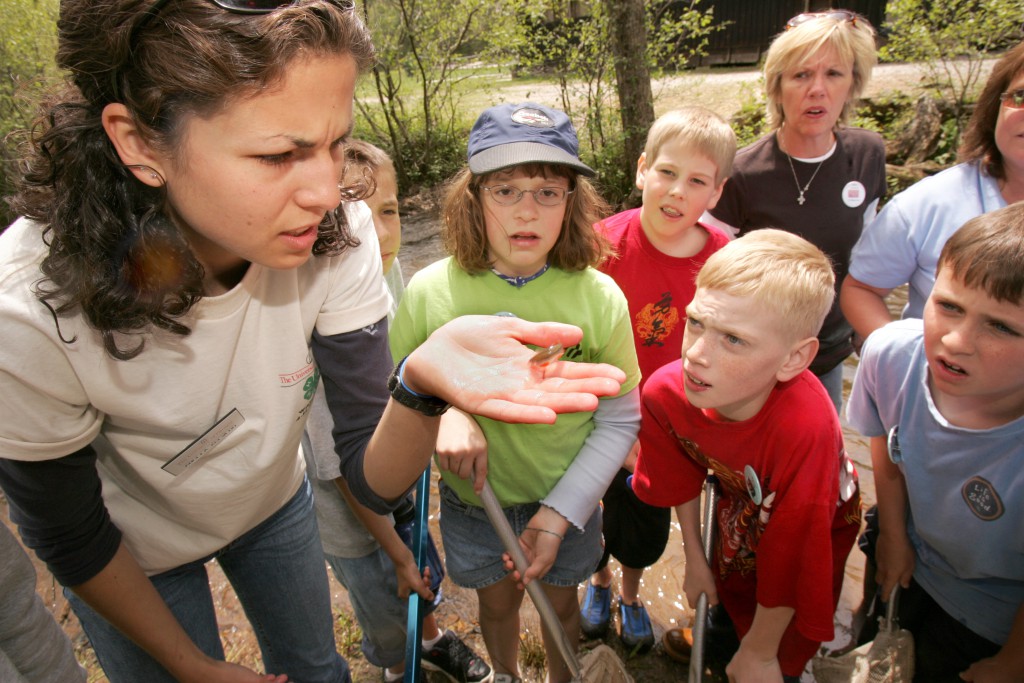“All education is environmental education. By what is included or excluded, students are taught that they are part of or apart from the natural world,” (Orr, 2004, p. 12). David Orr’s Earth in Mind challenged me to reflect upon my calling as an environmental educator, and, in particular, how I plan, implement, and evaluate my environmental education programming. Two concepts Orr shares are the importance of biophilia for young people and the need for environmental education to be integrated across all knowledge content areas.
Biophilia, a term coined by E.O. Wilson referring to humans having an inner tendency to seek connections with nature, must be an important component of environmental education. However, today’s young person can easily be disconnected from nature for so many reasons: not having the ability to safely play outdoors, living in an area without greenspace, etc. Students need to understand how they are part of the natural world – how the water they need to brush their teeth completes the water cycle, how the electricity they need to play a video game is generated, and how the paper they need for school assignments is grown and produced. Orr states biophilia extends beyond the idea of ‘how’ but also includes the ‘why’ – making these connections with nature a personal process. As an environmental educator, ensuring my lessons follow the idea of biophilia is critical, particularly challenging students to apply the knowledge learned to their own lives. Furthermore, having a biophilic design, incorporating natural materials, natural light, vegetation, nature views, and other experiences of the natural world, into the physical setting of my lessons are also important.
While environmental education could easily be seen as a cross-discipline between the natural sciences and education, Orr warns against compartmentalizing subjects and disciplines, arguing for the need for education to be integrated across the curriculum. Subjects are fragmented and taught independently; environmental education is not free from politics, physics, or economics. Yet far too often, students are only exposed to one piece of the puzzle, limiting their ability to connect problems and solutions. Orr (2004) argues that “students graduate without knowing how to think in whole systems. How to find connections, how to ask big questions, and how to separate the trivial from the important,” (p. 23). As an educator, this means that I first need to be knowledgeable in all contents areas. While my background and area of expertise may focus on one specific topic, I can’t merely ignore our current advancements in all areas, such as political science and economics. While I try to stay abreast of happenings within the natural science fields, if I want to be the best educator possible, I need to focus on all subject areas, not just natural sciences. Furthermore, this also challenges me to better design my environmental education programming to allow for better integration of subjects, including me relying on colleagues in other disciplines to be subject matter experts. “It is not education, but education of a certain kind, that will save us,” (Orr, 2004, p. 8).

participating in a field study at Wahsega 4-H Center.